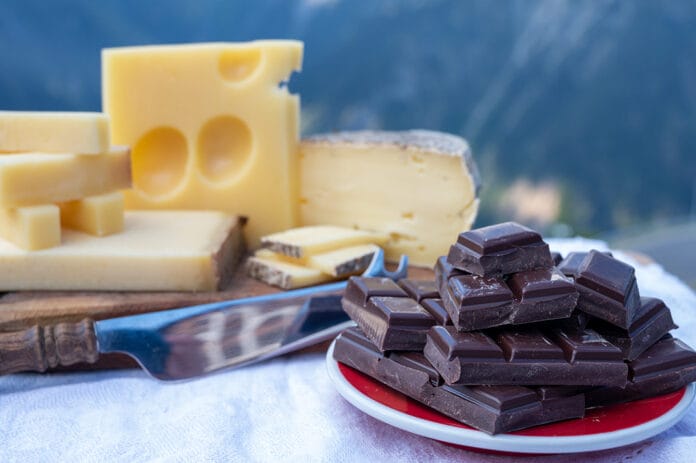Details about the foods dental patients eat seem to be a natural conversation for dental hygienists to initiate in the pursuit of a healthier oral cavity. I am sure I have given that same spiel hundreds of times to patients and their caregivers. In fact, I am guilty of sharing nutritional information with friends and family when I overhear or witness something that my dental hygiene heart could not bear to leave untouched.
A recent headline caught my attention, and it dawned on me that I should tag-team the food avoidance conversation with foods that help promote a healthier oral biome.
Cheese
Where are my dairy lovers at? While many understand the correlation between milk, calcium, and teeth, few extend that to other dairy products.
A few years ago, I proposed a question on Facebook to my friends and asked, “What would life be like without cheese?” Several people commented, and many messaged to say that life without cheese would be boring. Well, as someone who loves this dairy-packed food, I concur.
However, did you know that cheese possesses cariostatic properties? Cheese has been the center of multiple studies, and research even suggests that cheese as a final food in a meal will help reduce caries.1 Before you get excited, this means cheese in its natural form and not in the form of cheesecake, unfortunately.
Chewing cheese stimulates the salivary gland to produce salivary flow. Saliva buffers the acid in plaque, and stimulation to the salivary flow helps to reduce the acidic pH levels of the oral cavity.
Studies also conclude that there is an increased rate of sugar clearance due to the diluting action of cheese-stimulated saliva.1 Cheese is naturally rich in calcium and phosphorus, which can be essential to enamel remineralization. Additionally, cheese contains casein that helps to maintain a state of supersaturation, depressing demineralization and enhancing remineralization, which aids the phosphorus and calcium ions.2
Dark Chocolate
Who doesn’t love chocolate? I know I sure do. Did you know dark chocolate has many factors that can be healthy for the body? Dark chocolate is rich in antioxidants and can possibly improve your mood, assist in preventing cancer, and reduce heart disease.3
In addition, studies show that dark chocolate is effective in fighting cavities and periodontal disease. Dark chocolate contains polyphenols which are natural chemicals that limit oral bacteria.3 Polyphenols are also able to neutralize microorganisms that cause bad breath and help to prevent acid.3 Polyphenols possess antibacterial and antioxidant properties, in addition to improving mechanical and functional properties of biomaterials.4
The cocoa bean husk (CBH) is a waste material in the chocolate industry. Studies show that CBH reduces the growth rate of almost all oral streptococci, which results in acid reduction.5 Studies are ongoing to hopefully utilize this waste product in the dental industry by adding it to toothpastes and rinses.
CBH contains theobromine, and studies show that it causes remineralization of enamel lesions. It was concluded that theobromine in an apatite-forming medium could enhance the remineralization potential of the tooth.6 One study went as far as to say that theobromine is better than fluoride. It is thought that the amount of theobromine in a one-ounce dark chocolate bar has a better effect on tooth hardness than a 1.1% prescription sodium fluoride treatment.3
Xylitol
This naturally occurring ingredient is no stranger to the dental community. Due to its popularity in a sugar-free gum form, most dental patients are familiar with the term as well. However, being familiar with a word does not mean full comprehension of its capabilities.
Xylitol is a natural sweetener found in fruits and vegetables. This five-carbon sugar polyol is widely researched and globally accepted by the US Food and Drug Administration and the American Academy of Pediatric Dentistry.7
Xylitol helps eliminate the growth of Streptococcus mutans, which are the harmful oral bacteria that are responsible for tooth decay.7 Xylitol contributes to the promotion of remineralization by increasing the salivary flow and a rise in pH, as well as decreasing plaque. “Studies show that an ideal range of xylitol use for prevention of caries in adults is approximately 6.9 to 10.3 grams spread throughout each day, which is about two tsp.”8 Simply eating foods containing xylitol will not necessarily provide the noncariogenic properties for oral dentition. It is when xylitol is added to oral products and gums that we are able to seek the oral benefits it can provide.
High Fiber Foods
Fruits and vegetables alongside whole grains are rich in fiber, a substance our bodies need on a daily basis to help regulate the body’s sugar level and aid in digestion. It is recommended that adults and children receive 20 to 30 grams of fiber daily; however, most Americans only consume 15 grams per day.9 Food high in fiber generally takes longer to chew and thus stimulates the salvia longer, which helps to cleanse the teeth and buffer the pH of the oral cavity.10
But wait, there is more! One study showed that participants with lower fiber consumption were associated with increased odds of having more severe periodontal disease compared with those with higher fiber consumption. The studies resulted in individuals consuming fiber in the range of 0–11.9 g were 27% more likely to have increasing severity of periodontitis and individuals consuming low amounts of whole grain were 32% more likely to have increasing severity of periodontitis.11
Dental Professional’s Dietary Counsel
It goes without saying that dental professionals have valuable opportunities to counsel our patients on more than just oral hygiene habits. When opening up discussions about dietary don’ts, maybe it would be a great idea to piggyback it with dietary dos! By informing and educating patients on foods that benefit the oral cavity, we can help to combat oral disease.
Before you leave, check out the Today’s RDH self-study CE courses. All courses are peer-reviewed and non-sponsored to focus solely on high-quality education. Click here now.
Listen to the Today’s RDH Dental Hygiene Podcast Below:
References
- Herod, E.L. The Effect of Cheese on Dental Caries: A Review of the Literature. Australian Dental Journal. 1991; 36(2): 120-125.
- Ventimiglia, A.M., Birkenhager, J.M. (2012). Dental Health Effects of Casein Derived Products. In G.F. Ferrazzano & A. Ingenito (Eds.), Casein: Production, Uses and Health Effects (ch. 14). Nova Science Publishers. https://www.researchgate.net/publication/287366868_Dental_health_effects_of_casein_derived_products
- Sudharsana, A., Srisakthi. Tooth Friendly Chocolate. Journal of Pharmaceutical Sciences and Research. 2015; 7(1): 49-50. https://jpsr.pharmainfo.in/Documents/Volumes/vol7Issue01/jpsr07011510.pdf
- Kharouf, N., Haikel, Y., Ball, V. Polyphenols in Dental Applications. Bioengineering 2020; 7(3): 72. https://www.ncbi.nlm.nih.gov/pmc/articles/PMC7552636/
- Ooshima, T., Okaka, Y., Sasaki, H., et al. Caries Inhibitory Activity of Cacao Bean Husk Extract in In-vitro and Animal Experiments. Archives of Oral Biology. 2000; 45(8): 639-645.
- Amaechi, B.T., Porteous, N., Ramalingam, K., et al. Remineralization of Artificial Enamel Lesions by Theobromine. Caries Res. 2013; 47: 399-405.
- Nayak, P.A., Nayak, U.A., Khandelwal, V. The Effect of Xylitol on Dental Caries and Oral Flora. Clinical, Cosmetic and Investigational Dentistry. 2014; 6: 89-94.
- Pierce, K. (2019, December 25). All about Xylitol, the New Sugar: Sweetness with Benefits. Today’s RDH. https://www.todaysrdh.com/all-about-xylitol-the-new-sugar-sweetness-with-benefits/
- Fiber. (n.d.). Harvard: T.H. Chan School of Public Health. https://www.hsph.harvard.edu/nutritionsource/carbohydrates/fiber/
- Nutrition: What You Eat Affects Your Teeth. (n.d.). American Dental Association: MouthHealthy. https://www.mouthhealthy.org/nutrition/food-tips
- Nielsen, S.J., Trak-Fellermeier, M.A., Joshipura, K., Dye, B.A. Dietary Fiber Intake Is Inversely Associated with Periodontal Disease among US Adults. The Journal of Nutrition. 2016; 146(12): 2530–2536. https://doi.org/10.3945/jn.116.237065












